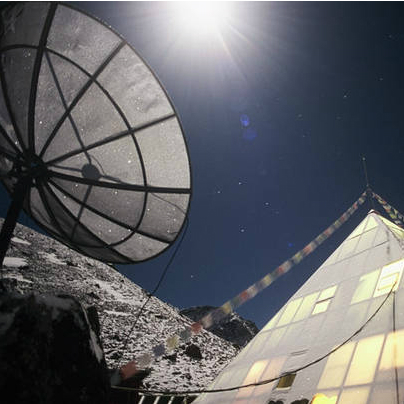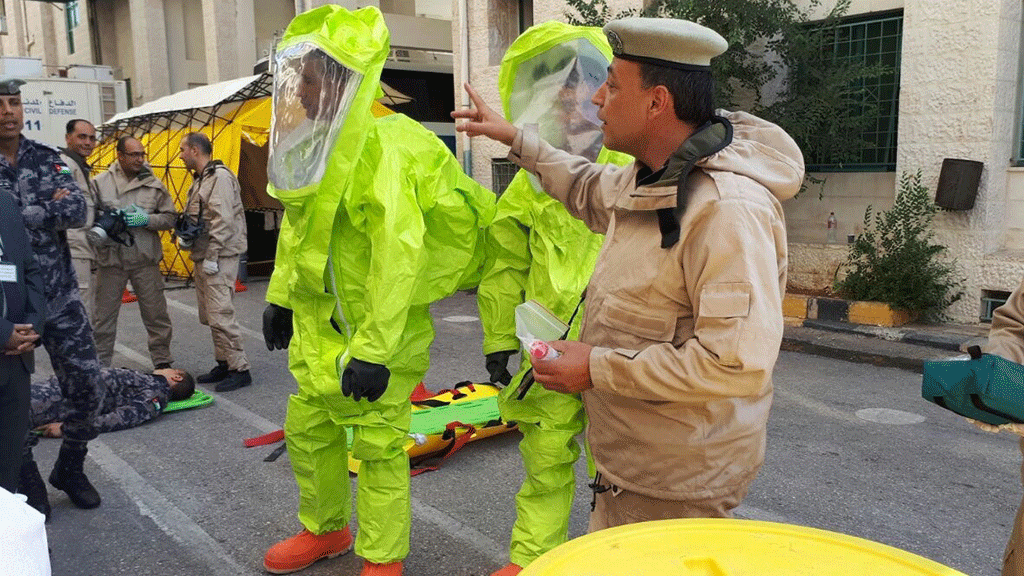5 International Scientific Efforts That You Need to Know About

From space exploration to medical research and environmental science, scientists from around the world work together to ensure a better future. In honor of international scientific collaboration and the value that it brings to all of us, here are 5 international scientific efforts you need to know about.
1. The International Rice Research Institute (IRRI)“If we are to win our war against poverty, and against disease, and against ignorance, and against illiteracy, and against hungry stomachs, then we have to succeed in projects like this.” – Former U.S. President Lyndon B. Johnson, 1966, during a visit to IRRI headquarters
Founded in 1960, the IRRI has grown to include 17 offices throughout the world and is committed to eradicating global hunger and poverty. Why is the IRRI on this list? Besides from being the world’s leading rice research institute, its international work throughout the 1960s played a pivotal role in the agriculture’s “Green Revolution” and helped stave off massive famine that was projected to afflict Asia in the 1970s. Since then, the rice varieties that the institute’s international scientists have worked together to create have been credited with saving millions of lives around the world. Today, the IRRI is utilizing its agricultural research to address such issues as gender equality and environmental sustainability.
2. The Human Genome Project“Without a doubt, this is the most important, most wondrous map ever produced by human kind.” – Former U.S. President Bill Clinton commenting on the of the Human Genome Project
Primarily undertaken by 6 countries – the United States, China, Japan, Germany, the United Kingdom, and France, the human genome project has significantly changed our understanding of human genetics. What did they do? Nothing really, JUST SEQUENCED AND MAPPED THE ENTIRE HUMAN GENOME. To put this into perspective, the human genome contains 3 billion letters. If you were to write a book with it, that book would be one million pages long. The understanding gained from this project is leading to the development of highly efficient, personalized treatments for a multitude of genetic disorders such as schizophrenia, diabetes, and heart disease. As scientists internationally continue to use and study the data provided by the human genome project, we can be sure to expect some amazing discoveries in the future… Who knows, they might even find a cure for male pattern baldness.
3. The International Vaccine Institute“Vaccines must be made available globally. The benefits are manifold, from the broader benefit to global public health, the creation of innovation and technical capacity at home and issues around national biodefense ― central to these is the idea that vaccines keep healthy people healthy.” – Jerome H. Kim, Director General of the International Vaccine Institute
The International Vaccine Institute (IVI) has been working hard for the past 20 years to create vaccines for infectious diseases plaguing developing countries. Headquartered in Seoul, South Korea, it is the only organization in the world dedicated to creating vaccines for developing countries. The institute’s staff include scientists and medical practitioners from Germany, the US, South Korea, Colombia, Kenya, Bangladesh, India, Canada, and other countries making it a truly international endeavor. Their work has led to the development of vaccines and medicines for cholera, typhoid, and other illnesses. What makes the IVI so special isn’t that it just develops vaccines for the developing world, they also deliver them! What’s even more awesome about this international effort? The IVI works to ensure that each of its vaccines can be affordably and sustainably produced within developing countries, increasing their accessibility as well as their impact.
4. The Pyramid“At 5,050 meters above sea level, the Ev-K2-CNR Pyramid Research Center is the highest laboratory in the world. With its solar-paneled sides, it is self-sustaining. And with a cabinet full of Danish butter cookies, life in the Pyramid is good.” – Kate Voss
Upon hearing that this research station was located on MOUNT EVEREST, it became obvious that it needed to be on this list. Although it was recently booted from its altitudinal throne by a research station in Ladakah, India, it holds a special place in my heart, because it looks AWESOME. I imagine the design process went like this:
Scientist 1: We need to build a research center.Scientist 2: Hmm… like standard lab format?Scientist 1: I was thinking a post-modern glass Pyramid.Scientist 2: …Scientist 1: And that we should put it on a mountain.Scientist 2: …Scientist 1: Mount Everest, to be exact.Scientist 2: …
The only thing crazier would be to put it in space.
Apart from being really high and looking really cool, the EvK2 CNR High Altitude Pyramid Research Center is completely self-sufficient, utilizing solar power for all of its energy needs. Coolness factor aside, there has been some amazing work going on at the Pyramid. Since 1990, it has seen over 500 scientific missions and hosted researchers from 143 scientific institutions from around the world who have gathered to research everything from Chronic Obstructive Pulmonary Disease to renewable energy based on biomass. No matter how you look at it, the Pyramid is definitely one of the coolest and most interesting research centers on the planet.
5. CERN“The clever people at CERN are smashing particles together in the hope that Doctor Who will turn up and tell them to stop” – Ben Aaronovitch, Moon Over Soho
First off, I know, everyone has probably heard of CERN, but if you haven’t, then you’re welcome, because CERN is pretty amazing. What’s there not to like about a giant particle collider smashing atoms together at speeds that would make Superman jealous? Aside from the possibility of creating a black hole on the planet, not much. Located in Switzerland and founded in 1952, CERN has been conducting physics experiments for nearly 65 years. Originally composed of 12 member states, CERN has expanded to included 21 nations and thousands of scientists from over 113 countries have come to CERN to conduct research. Apart from being arguably one of the world’s most well-known international scientific efforts (It’s hard to compete with particle colliders), it’s also the place where the internet was born. Yes, in 1990 the first website and server went online, not in Al Gore’s house, but at CERN, which is saying something. If your research is so intense that you had to create the internet to keep up with it, then you must be doing something right.
There you have it: 5 international scientific endeavors you need to know about. We know that there are thousands of international science efforts big and small being undertaken around the globe, and that this is but a small sample. If you know of any interesting scientific efforts taking place around the world, let us know about them! If there’s an international scientific collaboration taking place, the world should know about it! Help us spread the word about international science. Tweet your favorite international effort to us @CRDFGlobal on Twitter or drop us a comment on Facebook! We’d love to hear from you.



